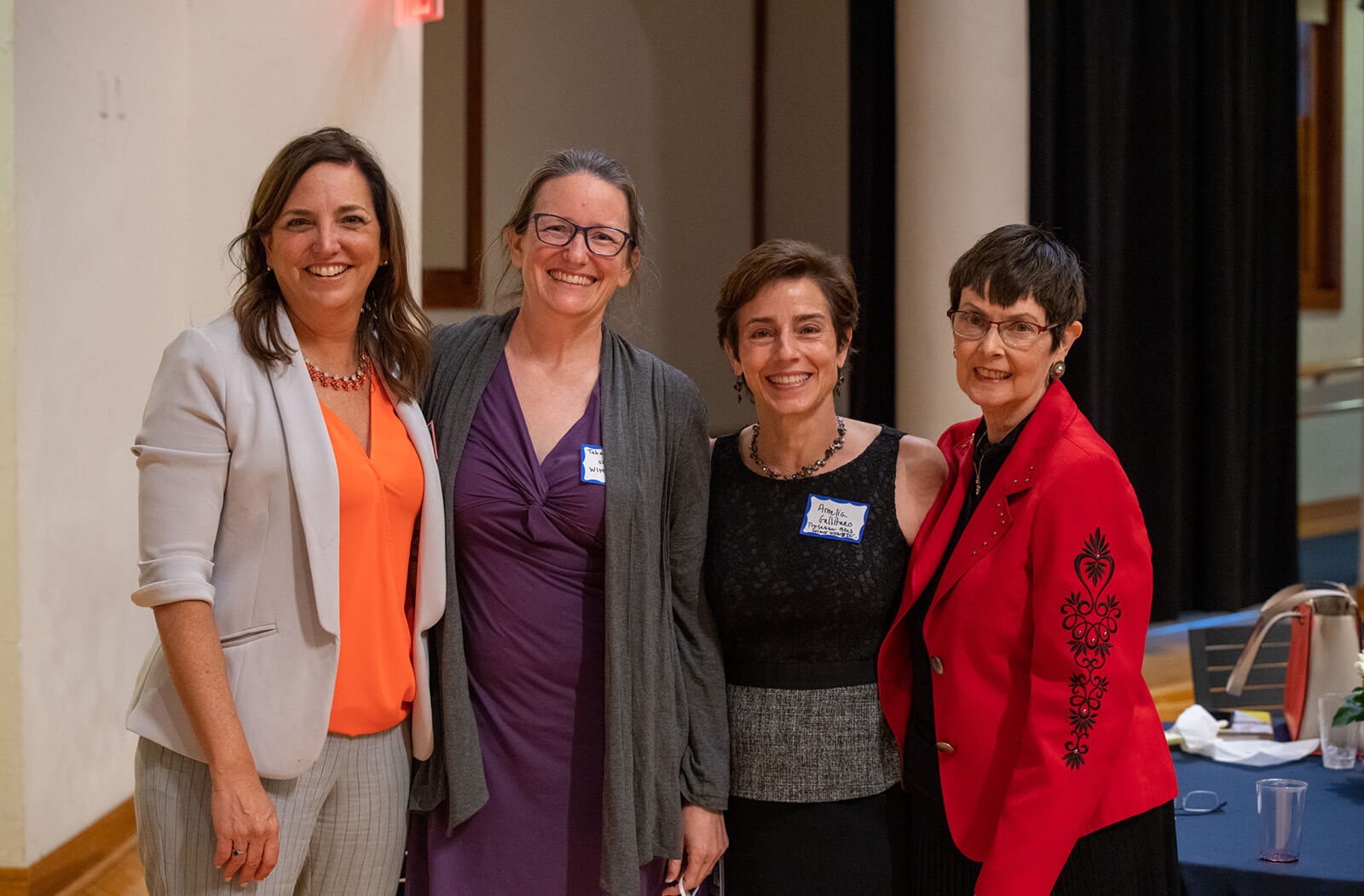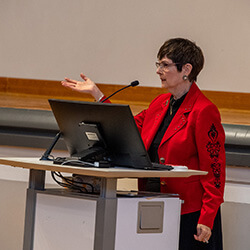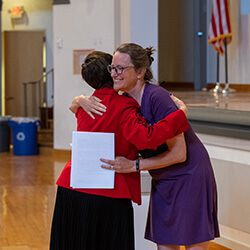
Where We Have Been, Where We Are Now and Where We Are Going

The Women in Medicine and Science (WIMS) hosted their 5th annual spring dinner, the first in-person spring gathering in two years, to celebrate and highlight the achievements women faculty and researchers have made.

“Being the first woman or being the only woman is exactly the same as any minority — you’re seen as the representative of that minority,” Dr. Nichols said. “After all those years in practice, I was back at a reunion and one of the [male] doctors there said, ‘I didn’t think you’d last long at all.’”
Despite being the first woman in several positions, Dr. Nichols expressed the challenges she faced. Some of her peers were not sure she would succeed due to how male-dominated the medical field was at the time.
Among her accomplishments, Dr. Nichols was named the first female president of the American Osteopathic Association, the American College of Osteopathic Internists and the Arizona Osteopathic Medical Association.
She was recently elected chair of the Accreditation Council for Graduate Medical Education and formerly served as dean of the Midwestern University/Chicago College of Osteopathic Medicine.
There has been a great deal of progress, yet disparities between men and women in medicine and science still prevail, including income equality.
Dr. Nichols also took time to show appreciation for the men who attended the meeting for using their positions and influence to help women get advancement opportunities and equitable treatment in the medical and science fields.
“We appreciate you; we appreciate what you’re doing to broaden the landscape for men and women based on qualifications,” Dr. Nichols said. “I assure you, we have HeForShe proponents in this room, no question.”
WIMS is a campus organization that advocates for women’s advancement and leadership in medically related fields and the sciences to ensure the successful participation of women in current and future roles within those fields.

“Dr. Gallitano led us through the establishment of this group, the development of our mission statement and funding a robust women’s executive committee,” Dr. Hale said. “Amelia has been an outstanding leader.”
Everyone who attended received a USB drive with research and statistics from the Association of American Medical Colleges (AAMC) regarding the state of women in medicine.
One of the attendees, Raeven Maxwell, works as a clinical research coordinator at the college. “It’s the first time that I’ve been to a conference like this,” Maxwell said. “For myself, wanting to pursue a career in a health-related profession, it feels like it sparks inspiration and motivation to keep going.”
About the College
Founded in 2007, the University of Arizona College of Medicine – Phoenix inspires and trains exemplary physicians, scientists and leaders to advance its core missions in education, research, clinical care and service to communities across Arizona. The college’s strength lies in our collaborations and partnerships with clinical affiliates, community organizations and industry sponsors. With our primary affiliate, Banner Health, we are recognized as the premier academic medical center in Phoenix. As an anchor institution of the Phoenix Bioscience Core, the college is home to signature research programs in neurosciences, cardiopulmonary diseases, immunology, informatics and metabolism. These focus areas uniquely position us to drive biomedical research and bolster economic development in the region.
As an urban institution with strong roots in rural and tribal health, the college has graduated more than 1,000 physicians and matriculates 130 students each year. Greater than 60% of matriculating students are from Arizona and many continue training at our GME sponsored residency programs, ultimately pursuing local academic and community-based opportunities. While our traditional four-year program continues to thrive, we will launch our recently approved accelerated three-year medical student curriculum with exclusive focus on primary care. This program is designed to further enhance workforce retention needs across Arizona.
The college has embarked on our strategic plan for 2025 to 2030. Learn more.